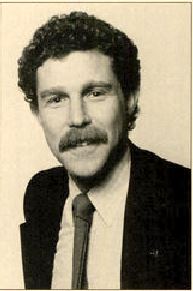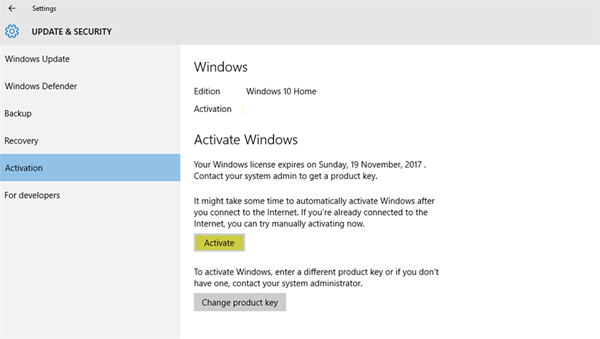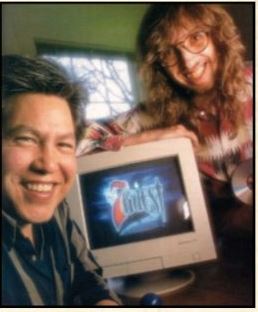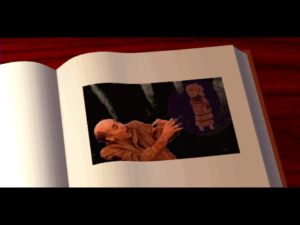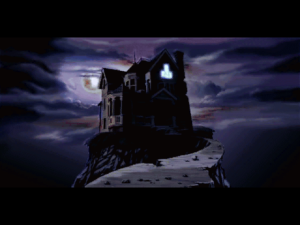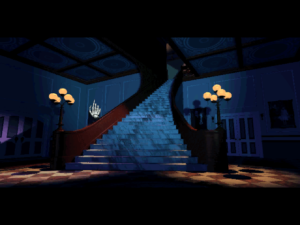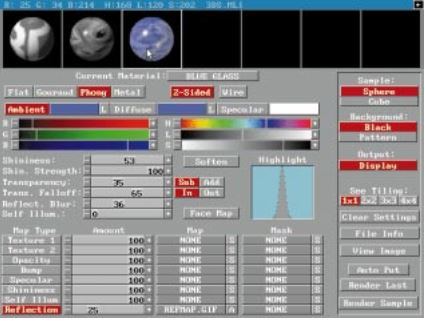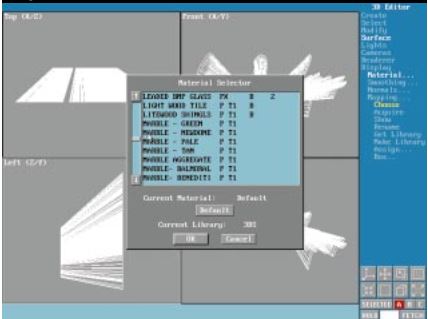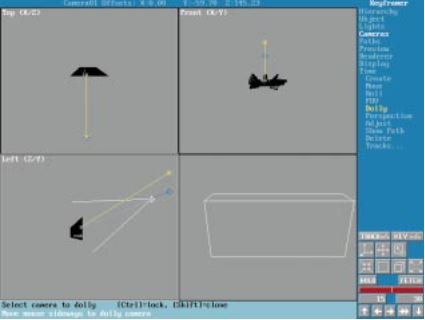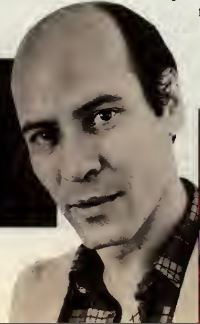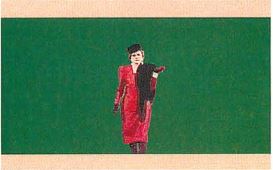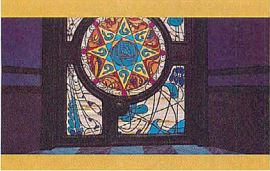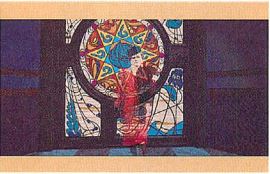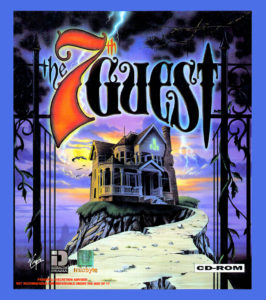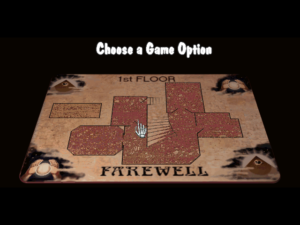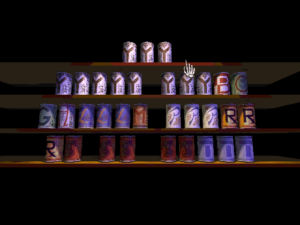The digital society which we’ve created over the last few decades has upended many of our traditional notions about commerce. Everyday teenagers now stress over their ratings and advertising revenues on YouTube; gamers in “free” games pay staggering sums for the privilege of advancing through them a little faster (wasn’t the actual playing supposed to be the point of a game?); “clicks” and “likes” have become commodities that are traded in the same way that soybean futures are in the “real” world; consumers have become speculators in their own future entertainment on crowd-funding platforms like Kickstarter; a writer like me can ask for support from readers like you to allow me to make content that I then give away for free. (Thank you for that!) And, in the most direct parallel to our main topic for today, even some of the biggest corporations on the planet have learned to give away their products for free, then ask us to pay for them later.
Some of these new modes of commerce reflect the best in us, some perhaps the very worst. They all share in common, however, the quality of being markedly different from the old model wherein you paid someone an upfront amount of money and got some concrete good or service in exchange. As those of you with elderly parents or grandparents may well have learned, our modern digital economies have departed so far from that model in some areas that just explaining how they work to someone still wedded to the old ways can be a daunting task indeed. (I know that my 86-year-old father has literally no idea what I do all day or how I can possibly be earning money from it…) Maybe we too should ask the question that so many of our elders are already asking themselves every day: exactly how did we get from there to here so quickly?
It’s a bigger question than any one article can possibly answer. Still, it does turn out that we can trace at least one point of origin of our strange new ways of commerce to a trio of American pioneers who, all within a year of one another, embraced a new model for selling software — a model which has, one might say, taken over the world.
The first of our pioneers is one Andrew Fluegelman. Born in 1943, Fluegelman within his first 35 years of life finished law school, passed the Bar exam, took up and then gave up corporate law, and settled into a whole new career as the owner, editor, and sole employee of the Headlands Press, a boutique book publisher in Marin County, California. He worked from time to time with the techno-utopian visionary Stewart Brand on The Whole Earth Catalog, and even the books he edited and published on his own had much the same counter-cultural DIY flavor: The New Games Book (a selection of friendly outdoor sporting activities for groups of adults), How to Make and Sell Your Own Record, Worksteads: Living and Working in the Same Place. Yet for all their hippie bona fides, Headlands books went out under the larger imprint of the international publishing titan Doubleday. The ability to speak the language of both the idealistic dreamer and the everyday businessperson proved a vital asset for Fluegelman throughout his life.
Like Brand and so many others of a similar bent, Fluegelman saw great potential in the personal computer as a force for social liberation. Therefore in 1981, before ever actually purchasing a computer of his own, he signed a contract with Doubleday to embark on a new book project, this time with himself in the role of coauthor rather than just editor. It was to be an exploration of the role of computers in the writing process, in terms of both current practicalities and future potential. He would of course need to buy himself a computer to complete the project. Just as he was about to pull the trigger on an Apple II, the IBM PC was announced. “I took one look at it and just had this gut feeling,” he said in a later interview. “This is what I want.”
While he waited for the machine he had ordered to arrive, Fluegelman, who had never touched a computer before in his life, started teaching himself BASIC from books. Even after the computer came in, learning to word-process on it remained on the back burner for a time while he continued to pursue his new passion for programming. His bible was that touchstone of a generation of amateur programmers, David Ahl’s million-selling book BASIC Computer Games. Fluegelman:
I got Ahl’s [book], and I said, “This is just what I want to do.” I typed [one of the games] in. It took me a day to get the bugs out and get the thing to run. And as soon as I saw the program running, I immediately started thinking, “Well, gee, I’d really like to add up the scores, and say this, and make a little noise…” I’d look through the book, and I’d say, “Oh, there’s something I could use. What happens if I stick it in there?”
I’m a real believer in the Berlitz method of programming. Which is: you learn how to say, “Please pass the salt,” [then] you look in the dictionary and look up the word for “pepper,” stick it in there, and, by God, someone gives you the pepper. And you know you’re making progress. Purely trial and error.
I liked it a lot. I abandoned all bodily functions for about a month.
Programmers are born as much as made. You either feel the intrinsic joy of making a machine carry out your carefully stipulated will or you don’t; the rest is just details. Clearly Fluegelman felt the joy.
Still, the book project wouldn’t wait forever. Fluegelman and Jeremy Joan Hewes, his coauthor, had the idea that they would indeed write the book together, but with each working on his or her own machine from his or her own office. They would share their files electronically; it would be one more way of practicing what they intended to preach in the book proper, about the new methods of working that were unlocked by the computer. But Hewes had an older CP/M computer rather than a flashy new IBM PC, and this stopped them in their tracks — for the only telecommunications package currently available for the latter came from IBM themselves, and could only swap files using IBM’s proprietary protocols. Fluegelman thus found himself in the ironic position of being able to trade files with an IBM mainframe, but not with most of his peers in the world of personal computing. He could see only one solution:
[I] started out to write a communications program. I said, “Gee, I’d really like to do this, and I’d like to do that, and we should have a dialing directory, and we should have some macros…” And I just kept adding to it for my own use.
We eventually typeset the book using the program I wrote. In the process, I gave it to a lot of my friends, and they started using it. At the time it was the only program that let you do these things on the IBM PC; this was the early spring of 1982. And inevitably one of my friends said, “You know, you really ought to publish that.”
If I hadn’t been in the publishing business for eight years, I would have gone the traditional route — find a publisher, royalties — but I’d been through all that, and I’d seen the pitfalls and all the ways things can get derailed. And this was kind of a new medium, and I was still very exhilarated by it. And I said, having had all this fun, I just can’t go the same publishing route that I’ve gone before.
Throughout his life, Fluegelman had a special relationship with San Francisco’s Golden Gate Bridge. “I think it’s a power point,” he said once only semi-facetiously. “I have more inspirations driving across the Golden Gate Bridge…” One day shortly after finishing his program, he was driving across while thinking back to the pledge drive he had seen the night before on the local PBS television station.
My American readers will doubtless recognize the acronym, but, for the benefit of those of you in other places: PBS stands for “Public Broadcasting System.” It’s a network of over-the-air television stations which show children’s programs (most famously Sesame Street) as well as documentaries, news, and high-culture content such as symphony concerts and dramatizations of classic literature. Although the stations are free to watch, they are unlike other free stations in that they don’t sustain themselves with advertising. Instead they rely on a limited degree of taxpayer funding, but most of all on donations, in any amount and frequency, from viewers who appreciate their content and consider it worth supporting. In some ways, then, PBS can be called the great forefather of the many non-coercive digital-funding models of today. And indeed, the tale of Andrew Fluegelman makes the otherwise tangential thread that runs from PBS to so many modern Internet economies much more direct.
For, driving across his favorite bridge that day, Fluegelman had a PBS-inspired epiphany. He would market his little telecommunications package under the name of PC-Talk, using a method no one had ever dreamed of before.
I said, I’ll just set it out there, encourage people to use it. If they like it, I’ll ask them to send me some money. [He set the initial “suggested” donation at $25.]
So, I sent out the first version of the program that way. I put some notices on The Source and CompuServe: I’ve got this program, I wrote it, it’ll do this and this. It’s available for free, but if you like it, send me the money. And even if you don’t like it, still make copies for your friends because maybe they’ll like it and send some money.
The response was really overwhelming. I was getting money! I remember on the first day I got a check in the mail, and I just couldn’t believe it. I almost got driven out of business filling orders. At the time I was still producing books, and software programming was my own late-night thing. And suddenly I was standing there all day filling orders and licking stamps and sending things out, and I had to hire someone to start doing that. I was totally unprepared for it.
While I had written the program to work very well in my own situation, once you start sending software out into the world you start hearing about people with all sorts of crazy circumstances that you haven’t anticipated at all. I think if I had tried to publish this first version of the program [conventionally], people would have reacted very negatively. But they didn’t because I’d sent it out in this unrestricted way. So people would write back and say, “This is great, but why don’t you add this? Why don’t you try this?” In many cases people even helped me re-program to deal with their situations. And I ended up calling that “freeback” instead of “feedback” because it was really getting free support back from the community.
The usually savvy Fluegelman did make a couple of puzzling decisions during these early days. The first was to name his revolutionary scheme for software distribution “Freeware.” If you twist your synapses around just right, you can almost arrive at the sense he was trying to convey, but under any more straightforward reading the name becomes dangerously counter-intuitive. Thousands upon thousands of developers who came after Fluegelman would work desperately, but only partially successfully, to make people understand that their software wasn’t in fact “free” in the sense that using it regularly placed no ethical demand upon the user to financially compensate the creator.
Then, having come up with such a flawed name, the lawyer in Fluegelman came to the fore: he went out and trademarked it. He imagined creating a proprietary “Freeware catalog,” collecting a lot of software that was marketed on the same model. Accordingly, he also included in his program’s liner notes a request for other programmers with useful software of their own to contact him, thereby to join him in a “unique marketing experiment.”
In the meanwhile, PC-Talk’s success was such that it quickly caught the attention of the business-computing mainstream. Already in August of 1982, the widely read InfoWorld magazine published an article on the subject, under the heading “CA man likens ‘Freeware’ to user-supported TV.” Fluegelman noted sensibly therein that, rather than fighting against the natural desire people had to make copies of their software and share them with their friends, Freeware leveraged it. He estimated that five copies of PC-Talk were made for every one that was downloaded directly from one of the commercial online services or sent out on disk by himself in response to a mailed request — and, unlike a conventional software publisher, he thought this ratio was just great.
Our second pioneer was a far more experienced programmer than Fluegelman. Seattle-area resident Jim Knopf was only one year older than our first pioneer, but had already worked for IBM for many years as a systems analyst by the dawn of the microcomputer era. He built his first personal computer himself in 1978, then sold it to partially finance an Apple II. Among other things, he used that machine to keep track of the names and addresses of his church’s congregation. Knopf later wrote that “I liked what I produced so much [that] the program itself became a hobby — something I continued to work on and improve in my spare time.”
When the IBM PC was released in 1981, Knopf sold his Apple II and bought one of those instead. His first project on his new computer was to write a new version of his database program. As soon as said program was far enough along, Knopf started sharing it with his colleagues at IBM. They in turn shared it with their friends, and soon the database, which he called Easy File, went beyond his office, beyond Seattle, beyond Washington State. People encouraged him to upload it to the early online services; this he obligingly did, and it spread still faster.
Knopf was gratified by its popularity, but also bothered by it in a certain way. His database was still under active development; he was improving it virtually every week. But how to get these updates out to users? He included a note in the program asking users to “register” themselves so he could keep in touch with them; he maintained the resulting mailing list in Easy File itself. Yet keeping everyone up to date was prohibitively complicated and expensive in a world where most software was still passed around on floppy disks — a world where the idea of a program as a changing, improving entity rather than a static tool that just was what it was barely existed in the minds of most people. “How could I identify which of the users were serious ones – those that desired and required enhancements?” Knopf later wrote about his mindset at the time. “How could I afford to send mailings to notify them of the availability of improvements?”
So, in September of 1982, Knopf made a few moves which would define his future. First, he changed his own name for purposes of business. Worried that his Germanic surname would be too difficult for potential customers to pronounce and remember, he quite literally translated it into English. “Knopf,” you see, is the German word for the English “button” — and so Jim Knopf became Jim Button. (I’ll refer to him by the latter name from now on. Coincidentally, “Jim Knopf” is also the name of a character from a popular series of children’s books in Germany.) Next, he registered a company that referenced his new nom de plume: Buttonware. And, last but by no means least, he added a new note to his program. “I would ask those who received it to voluntarily send a modest donation to help defray my costs,” remembered Button later. “The message encouraged users to continue to use and share the program with others, and to send a $10 donation only if they wanted to be included in my mailing list.”
The very first person to contact Button in response told him that his approach was just the same as the one used by another program called PC-Talk. Button found himself a copy of PC-Talk, read its pitch to other programmers interested in joining the ranks of Freeware, and sent his own Easy File to Andrew Fluegelman. Fluegelman phoned Button excitedly on the same day that he received the package in the mail. The two of them hit it off right away.
While they waited for Fluegelman to find enough other quality software to make up his Freeware Catalog, the two agreed to form a preliminary marketing partnership. Button would rename his Easy File to PC-File and raise its price to $25 to create a kinship between the two products, and each program would promote the other, along with the Freeware trademark, in its liner notes. Button:
My wife said I was “a foolish old man” if I thought even one person would voluntarily send me money for the program. I was more optimistic. I suspected that enough voluntary payments would come to help pay for expansions to my personal-computer hobby – perhaps several hundred dollars. Maybe even a thousand dollars (in my wildest dreams!).
As it happened, he would have to learn to dream bigger. Like PC-Talk, PC-File turned into a roaring success.
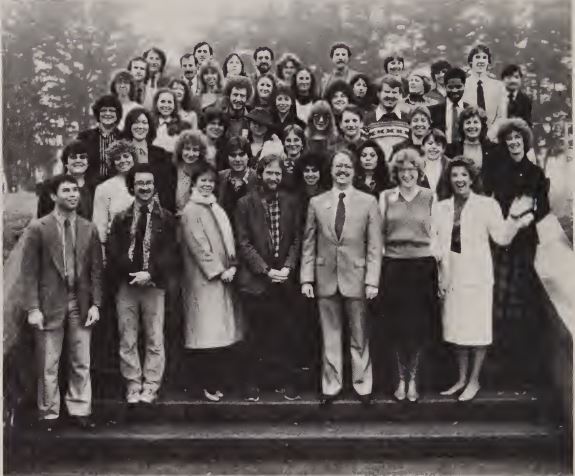
The founding staff of PC World magazine. Andrew Fluegelman stands in the very back, slightly right of center.
Both programs owed much of their early success to the extracurricular efforts of the indefatigable Andrew Fluegelman. Shortly after releasing PC-Talk to such gratifying interest, Fluegelman had given the final manuscript of his word-processing book to Doubleday, who would soon publish it under the title Writing in the Computer Age. Still as smitten as ever by the potential of personal computing, he now embarked on his third career: he became a full-time computer journalist. He initially wrote and edited articles for PC Magazine, the first periodical dedicated to the IBM PC, but got his big break when he was asked to join the staff of a new rival known as PC World. Within a few issues, Fluegelman became editor-in-chief there.
Not coincidentally, the magazine lavished glowing coverage upon PC-Talk and PC-File. The latest version of Button’s program, for example, got a six-page feature review — as much space as might be devoted to a major business-software release from the likes of Microsoft or VisiCorp — in PC World‘s September 1983 issue. “What was previously a very desirable program is now just about mandatory for much of the PC population,” the review concluded. “If you use PC-File and don’t send Jim Button a check, the guilt will kill you. And it should.”
Button and his family were vacationing in Hawaii when the review appeared. Button:
The response was overwhelming. Our house sitter had to cart the mail home daily in grocery sacks.
When we arrived home, the grocery sacks were strewn all over the basement floor. We had to step over and around them just to get into our basement office. My son, John, worked days, evenings, and weekends just catching up on the mail. Life would never be the same for any of us!
Button would later date the beginning of Buttonware as a real business to these events. Nine months later, he quit his job with IBM, by which time he was making ten times as much from his “moonlighting” gig as from his day job.
Ironically, though, Button had already parted ways to some extent with Fluegelman by the time that life-changing review appeared. Fluegelman was finding it difficult to focus on his idea of starting a Freeware catalog, given that he was already spending his days running one of the biggest magazines in the computer industry and his evenings improving and supporting PC-Talk. Button:
Andrew got questions about my program and I got questions and requests about his. Checks were sent to the wrong place. The work required to correct all this grew exponentially. We had to make the separation.
Button came up with his own moniker for the distribution model he and Fluegelman had pioneered: “user-supported software.” That name was perhaps less actively misleading than “Freeware,” but still didn’t really get to the heart of the matter. Other names that were tried, such as “quasi-public domain,” were even worse. Luckily, the perfect moniker — one that would strike exactly the right note, and do it in just two syllables at that — was about to arrive along with Bob Wallace, the third principal in our little drama.
Like Jim Button, Bob Wallace was based in Seattle, and was a veteran of the kit era of personal computing. In fact, his experience with microcomputers stretched back even further than that of his counterpart: he had been the founder in 1976 of the Northwest Computer Society, one of the first hobbyist user groups in the country. Shortly thereafter, he was recruited from the computer store where he worked by Paul Allen, whereupon he became Microsoft’s ninth employee. In time, he became the leading force behind Microsoft’s implementation of the Pascal programming language. But, as an unreformed hippie whose social idealism paralleled his taste for psychedelic drugs, he found both Microsoft’s growing bureaucracy and its founders’ notoriously sharp-elbowed approach to business increasingly uncongenial as time went on. In March of 1983, he was for the first time refused permission to barge into Bill Gates’s office unannounced to argue some technical point or other, as had always been his wont. It was the last straw; he quit in a huff.
Taking note of Fluegelman and Button’s success, he wrote a word processor using his own Pascal implementation, and released it as PC-Write under the same payment model. To encourage its distribution, he added an extra incentive. He sent to any user who mailed in the suggested donation of $75 a special registration code, which she was then expected to enter into her copy of the program. When she gave this copy to others, it was thus tagged with its source. If any users of those copies sent in the fee, Wallace would send $25 to the user whose tag it bore; he later claimed that at least one person made $500 in these commissions. In its roundabout way, the scheme pioneered the idea of not just asking users for a donation out of the goodness of their hearts, but marking and altering the functionality of the software for those who sent in the payment, all through the use of the soon-to-be ubiquitous mechanism of the registration code.
But Wallace’s biggest contribution of all came in the form of a name. And therein lies a tale in itself.
Back in July of 1982, an InfoWorld magazine editor named Jay Lucas had started a column on “freeware” without being aware of Fluegelman’s counter-intuitive use of that term; Lucas took the word to mean any and all freely distributed software, whether the author asked for an eventual payment in return or not. The following spring, Fluegelman contacted the magazine to inform them of his trademark and ask them to cease and desist from violating it. So, Lucas launched a contest among his readers to come up with a new name. He reported in the InfoWorld dated May 30, 1983, that “at least a dozen” readers had sent in the same suggestion: “shareware.” He announced that he would be using this name henceforth. At the time, he still made no distinction between “free” software that came with financial strings attached and software that didn’t. He was, in other words, effectively using “shareware” as a synonym for all types of freely distributed software.
But when Bob Wallace saw the name, he knew that it was perfect for his distribution model: pithy, catchy, with all the right intimations. He contacted Lucas, who told him that he was free to use it; InfoWorld made no legal claim on the name. So, when PC-Write went out later that year, it described itself as “shareware.”
In early 1984, Softalk IBM, a brief-lived spinoff of a much-loved Apple II magazine, hired one Nelson Ford to write a regular column about “public-domain software.” Unsure what he should call the distribution model being used by each of Fluegelman, Button, and Wallace under a different name, he started off by employing the manifestly inadequate placeholder “quasi-public domain.” But in his May 1984 column, he announced a contest of his own: “A free disk of software and widespread publicity for the person sending in the best name for quasi-PD, contribution-suggested software. Since Andy won’t let anyone use ‘freeware,’ we’ll have to come up with another catchy name.”
He received such dubious suggestions as “conscience-wear” — “the longer you use the software, the more it wears on your conscience if you do not pay” — and “tryware.” But, just as Lucas had over at InfoWorld, Ford kept getting most of all the suggestion of “shareware.” Unaware of the name’s origin at InfoWorld, but well aware of its use by Wallace, he suspected that “shareware” would be as impossible for him to appropriate as “freeware.” Nevertheless, he inquired with Wallace — and was pleasantly surprised to be told that he was more than welcome to it. Ford announced the new name in the August 1984 issue of Softalk IBM.
It’s questionable whether the actual column in which he made the announcement was all that influential in the end, given that the issue in which it appeared was also the last one that Softalk IBM ever published. Still, Ford himself was a prominent figure online and in user-group circles. His use of the name going forward in those other contexts, combined with that of Jay Lucas in InfoWorld, probably had a real impact. Yet one has to suspect that it was PC-Write itself which truly spread the name hither and yon.
For, perhaps because a word processor, unlike a telecommunications program or a database, was a piece of software which absolutely every computer owner seemed to need, Wallace was even more successful with his first piece of shareware than the two peers who had beaten him onto the scene had been with theirs. The company he founded, which he called QuickSoft, would peak with annual sales of more than $2 million and more than 30 employees, while PC-Write itself would garner more than 45,000 registered users. Staying true to his ideals, Wallace would always refuse to turn it into a boxed commercial product with a price tag in the hundreds of dollars, something many conventional software publishers were soon pressuring him to do. “I’m out to make a living, not a killing,” he said.
Jim Button was less inclined to vocalize his ideals, but one senses that much the same sentiment guided him. Regardless, he too did very well for himself. Already by 1984, he was getting approximately $1000 worth of checks in the mail every day. While PC-File itself never garnered quite the popularity of PC-Write — about 7000 users registered their copies in the end — Button soon branched out well beyond that first effort. Buttonware would peak with annual sales of $4.5 million and 35 employees.
Those who jumped on the shareware bandwagon afterward would find it very difficult to overtake these two pioneers in terms of either income or market impact. As late as 1988, Compute! magazine judged that the two most impressive shareware products on the market were still PC-File and PC-Write, two of the first three ever released. But PC-Talk would have a shorter lifespan — and, much more tragically, so would its creator.
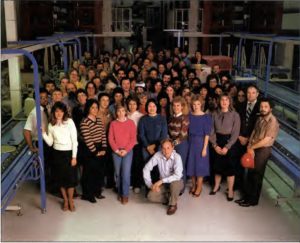
The founding staff of Macworld magazine. Andrew Fluegelman can just be seen at the very back, slightly left of center.
The PC World issue with the landmark review of PC-File was still on newsstands when Andrew Fluegelman had his next life-changing encounter with a computer: he was one of a select few invited to Apple for an early unveiling of the new Macintosh. He was so smitten by this whole new way of operating a computer that he immediately began lobbying for a companion magazine to PC World, to be named, naturally enough, Macworld. Its first issue appeared in time to greet the first Macintosh buyers early in 1984. Fluegelman held down the editor-in-chief job there even as he continued to fill the same role at PC World.
He was utterly unfazed to thus be straddling two encampments between which Apple was trying to foment a holy war. He spoke about the differences between the two aesthetics of computing in an interview that, like so much of what he said back then, rings disarmingly prescient today:
People [say the Macintosh is] more of a right-brain machine and all that. I think there is some truth to that. I think there is something to dealing with a graphical interface and a more kinetic interface; you’re really moving information around, you’re seeing it move as though it had substance. And you don’t see that on [an IBM] PC. The PC is very much a conceptual machine; you move information around the way you move formulas, elements on either side of an equation. I think there’s a difference.
I think the most important thing is to realize that computers are tools, that unless you want to become an expert programmer, the main thing that a computer provides you is the ability to express yourself. And if it’s letting you do that, if you now have hands on those tools, then you can be a force for good out in the world, doing the things that you used to do, that you’re still doing — representing your own ideas, not changing your persona to suddenly become a “computer person.”
And I think that may be the advantage of the Macintosh.
At bottom, Fluegelman himself wasn’t really a “computer person” in the sense of Button and Wallace, both of whom had been programming since the 1960s. And then, running not one but two of the biggest computer magazines in the country could hardly leave him with much free time. Thus PC-Talk was somewhat neglected, and other telecommunications software — some of it released under the burgeoning shareware model — took its place. Fluegelman accepted this with equanimity; he was never inclined to stay in one place for very long anyway. In an interview conducted at the very first Macworld Expo in January of 1985, he spoke of his excitement about the future — both his personal future and the world’s technological future:
I think this is just the next adventure for a lot of us to get into. I know the intellectual excitement the [computer] has caused for me. It’s really been a rejuvenation, and anything that gets you that pumped up has got to be something that you can use in a good way.
I also think that people who do get excited about computers and involved in all this are almost uniformly intelligent, interesting people. I never have been as socially involved, as interconnected with as many different kinds of people, as when I started getting involved with computers. I think that the easier it is for people to express themselves, and to share their views with others, that’s got to be a good democratic force.
It’s great to go along for 40 years and still find your life changing and new things happening. It makes you look forward to what’s going to happen when you’re 60, what’s going to happen when you’re 80.
Quotes like these are hard to square with what happened to Andrew Fluegelman just six months later.
On July 6, 1985, Fluegelman left his office as usual at the end of a working day, but never arrived at his home; he simply disappeared. A week later, police discovered his Mazda hatchback parked near the toll plaza at the entrance to the Golden Gate Bridge. They found a note addressed to his wife and family inside, but its contents have never been published. Nevertheless, we can piece some things together. It seems that his health hadn’t been good; he’d been suffering from colitis, for which he’d begun taking strong medication that was known to significantly impact many patients’ psychology — and, indeed, friends and colleagues in the aftermath mentioned that he’d been acting erratically in the final few days before his disappearance. There are reports as well that he may have recently received a cancer diagnosis. At any rate, the implications seem clear: the 41-year-old Andrew Fluegelman went back to one of his favorite places in the world — the bridge where he had invented the revolutionary concept of shareware if not the name — and jumped 220 feet into the water below. His body was never recovered.
The legacy of those brief four years between his discovery of the joys of BASIC and his death by suicide encompasses not only the shareware model but also PC World and especially Macworld. It went on to become arguably the most literate, thoughtful computer magazine ever, one of the vanishingly few to evince a genuine commitment to good writing in the abstract. In doing so, it merely held to the founding vision of its first editor-in-chief. One can’t help but wonder what else this force of nature might have done, had he lived.
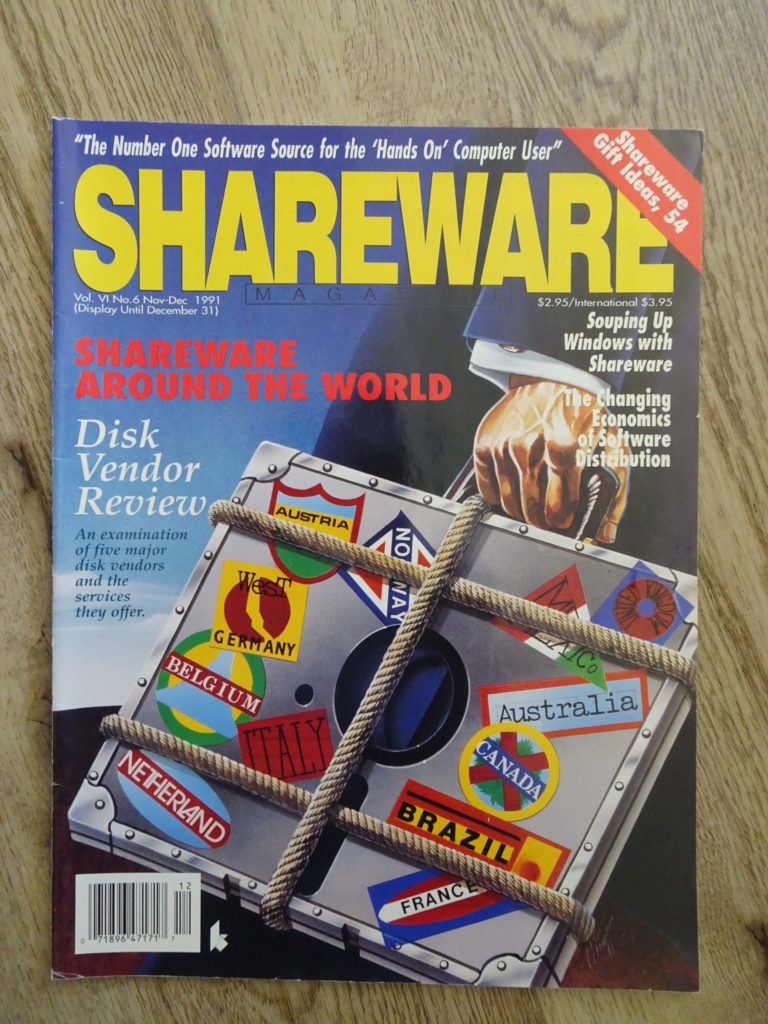
At shareware’s peak in the early and mid-1990s, at least one glossy newsstand magazine was devoted exclusively to the subject in quite a number of countries.
By that fateful day in 1985, shareware was already becoming an unstoppable force, with more and more programmers throwing their hats into the ring. To be sure, most of them didn’t build seven-figure businesses out of it, as Jim Button and Bob Wallace did. Inevitably for a distribution model that placed all of its quality control on the back end, much of the shareware that was released wasn’t very good at all. Yet even many of those who didn’t get to give up their day jobs did receive the satisfaction and capitalistic validation of being paid real money, at least every once in a while, for something they had created. In time, this loose-knit band of fellow travelers began to take on the trappings of a movement.
To wit: in February of 1987, a “Meeting of Shareware Authors” assembled in Houston to chat and kibitz about their efforts. Out of that meeting grew the Association of Shareware Professionals six months later, with founding chairmen Jim Button and Bob Wallace. In the years that followed, the ASP published countless shareware catalogs and pamphlets; they even published a 780-page book in 1993 called The Shareware Compendium, which represented the last attempt anyone ever made to list in one place all of the staggering quantity of shareware that was available by that point. But perhaps even more importantly, the ASP acted as a social outlet for the shareware authors themselves, a way of sharing hints and tips, highs and lows, dos and don’ts with one another.
There arose more big success stories out of all this ferment. For example, one Phil Katz was responsible for what remains today the most tangible single software artifact of the early shareware scene. In 1986, he started a little company called PKWare to distribute a reverse-engineered shareware clone of ARC, the most popular general-purpose compression program of the time. When the owners of ARC came after him with legal threats, he switched gears and in 1989 released PKZIP, which used an alternative, much more efficient compression format of his own design. Although he sold PKZIP as shareware — $25 donation requested, $47 for a printed manual — he also scrupulously documented the compression format it used and left the door open for other implementations of it. He was rewarded with sweet revenge: ZIP quickly superseded ARC all across the digital world. Striking a fine balance between efficiency and ease of implementation, not to mention being unentangled by patents, it has remained the world’s most common compression format to this day, a de facto standard that is now built right into many operating systems.
Another success story is less earthshaking and more esoteric, but instructive nonetheless as an illustration of just how far the shareware model could be stretched. In a time when desktop publishing was one of the biggest buzzwords in computing, a veteran of print publishing named Gary Elfring took a hard look at the current state of digital fonts, and noted how expensive those offered by major foundries like Adobe tended to be. He started Elfring Soft Fonts to distribute shareware typefaces, and made a lot of money from them in the late 1980s and early 1990s, before the established vendors of word processors and operating systems got their acts together in that department.
I could go on and on with such stories, but suffice to say that many people did very, very well from shareware during its heyday.
Like any movement, shareware also came complete with internecine disputes. One constant source of tension were the many third parties who collected shareware which they didn’t own on physical media for distribution. As early as 1984, the librarian of the Silicon Valley Computer Society users group caused an uproar when he started selling floppy disks filled with shareware for $6 apiece, a figure somewhat above the cost of blank disks and postage alone. “It’s not legal,” said Andrew Fluegelman flatly at the time. “I’m opposed to it because when somebody spends even $6 for a disk, they feel they’ve paid for it and see little reason to pay again for it. I’m concerned about somebody building a product around my product.” But, in a rare break with Fluegelman, Jim Button had a different point of view: “With that [price], all he’s doing is helping me distribute sample copies.” He continued in later years to believe that “distribution is one of the cornerstones of sales. All other factors being equal, if you can double your distribution you will double your sales.”
In the end, Button’s point of view carried the day. Shareware authors were never entirely comfortable with the “parasites” who profited off their software in this way, and Fluegelman’s worry that many users would fail to distinguish between paying a cataloger and paying the actual creator of the software was undoubtedly well-founded. Yet the reality was that the vast majority of computer owners would not go online until the World Wide Web struck in the mid-1990s. In the meantime, floppy disks — and eventually CD-ROMs — were the only realistic mechanism for reaching all of these otherwise isolated users. The catalogers and the authors had to learn to live with one another in an uneasy symbiotic relationship.
Another, even more bitter dispute within the ranks of shareware was touched off near the end of the 1980s, when some authors started opting to “encourage” registration by releasing crippled versions of their software — programs that only functioned for a limited time, or that blocked access to important features — that could only have their full potential unlocked via the input of a valid registration code. Although Bob Wallace had ironically pioneered the idea of a registration code that was input directly into a program, he and most of the other early shareware pioneers hated to see the codes used in this way. For the socially conscious Wallace, it was a moral issue; his vision for shareware had always been to collect payment from those who could pay, but not to deprive those who couldn’t of quality software. Button as well preferred to rely upon the honor system: “Don’t get off on the wrong foot with your users with things like crippled programs, time-limited programs, and other negative incentives to register your software. If you can’t trust your users to pay for truly good software, then you should stay out of the shareware business.” Under the influence of these two founding chairmen, the ASP refused for a time to admit shareware authors who freely distributed only crippled versions of their software.
In the end, though, the ASP would be forced to relax their stance, and “crippleware” would become nearly synonymous with shareware in many circles, for better or for worse. In 1989, Nelson Ford, the earlier popularizer of the name “shareware,” set up a service for authors which let people register their software over the telephone using their credit cards instead of having to mail checks or cash through the post. The ease of passing out registration codes this way, without having to send out disks and/or documentation or do any additional work at all, probably led many more authors to go the crippleware route. In fairness to those who decided to implement such schemes, it should be noted that they didn’t have the advantages that went along with being first on the scene, and were often marketing to less committed computer users with a less nuanced sense of the ethics of intellectual property and the sheer amount of work that goes into making good software of any stripe.
The buzz around shareware gradually faded in the second half of the 1990s, and by soon after the turn of the millennium the term was starting to seem like an antiquated relic of computing’s past. Even the Association of Shareware Professionals eventually changed their name to the Association of Software Professionals, before doddering off entirely. (A website still exists for the organization today, but it now bills itself as strictly an historical archive.)
Yet it would be profoundly inaccurate to say that shareware died as anything but a name. On the contrary: it conquered the world to such an extent that it became the accepted means of distributing much or most software, and as such is no longer in need of any particular name. Just about everyone is selling shareware today — not only the sometimes honest, sometimes dodgy small vendors of “try before you buy” utilities of many types, but also some of the biggest corporations in the world. Microsoft, for example, now distributes Windows using what is essentially the shareware model: users download a copy for free, enjoy a limited trial period, and then need to purchase a registration code if they wish to go on using it. Many other software developers have stuck to their idealistic guns and put their creations out there uncrippled, asking for a donation only from those who can afford it. And, as I mentioned to open this piece, the overarching spirit of shareware, if you will, has infected countless digital economies that don’t involve downloads or registration keys at all.
Jim Button and Bob Wallace got to see some of these later developments, but they weren’t active participants in most of them. Wallace gradually divested himself from Quicksoft after 1990. Ever the hippie, he devoted his time to the study and promotion of psychedelic drugs and other “mind-expanding technologies” via publications and foundations. He died in 2002 at age 53 from a sudden attack of pneumonia that may or may not have been related to his quest for chemical transcendence.
Jim Button (né Knopf) very nearly died even younger. At the age of 49 in 1992, he had a major heart attack. He survived, but wasn’t sure that he could continue to cope with the stress of running his shareware business. At the time, big players like Microsoft were pouring enormous resources into their own productivity software, and the likes of little Buttonware had no real hope of competing with them anymore. This combination of factors prompted Button to slowly wind his company down; after all, his decade in shareware had already left him with enough money to enjoy a comfortable early retirement. He died in 2013, a few weeks shy of his 71st birthday. He continued until the end to downplay his role in the evolution of software distribution and digital culture. “I’m not a visionary man,” he said. “I never saw the future, but I was lucky enough to be in the right place at the right time, with the right ideas and a proper amount of energy.”
Some might say that the “right ideas” are synonymous with vision, but no matter; we’ll let him keep his modesty. What he and his fellow pioneers wrought speaks for itself. All you have to do is look around this place we call the Internet.
(Sources: the books The New Games Book by the New Games Foundation, Writing in the Computer Age by Andrew Fluegelman and Jeremy Joan Hewes, and Gates by Stephen Manes and Paul Andrews; Softalk IBM of May 1984, June 1984, July 1984, and August 1984; Byte of June 1976, June 1983, July 1984, March 1985, and September 1987; 80 Computing of May 1987; Ahoy! of February 1984; CompuServe Magazine of December 1990 and March 1992; Family Computing of March 1984; InfoWorld of July 5 1982, August 23 1982, December 20 1982, March 7 1983, May 30 1983, June 27 1983, July 30 1984, September 17 1984, October 22 1984, July 29 1985, December 23 1985, August 25 1986, and December 7 1987; MicroTimes of May 1985 and August 1985; Games Machine of October 1987; Compute! of February 1985 and June 1988; PC World of September 1983; Macworld premiere issue. Online sources include The Association of Software Professional’s website, Michael E. Callahan’s “History of Shareware” on Paul’s Picks, The Charley Project‘s entry on Andrew Fluegelman’s disappearance, the Shareware Junkies interview with Jim “Button” Knopf, “Jim Button: Where is He Now?” at Dr. Dobb’s, the M & R Technologies interview with Jim Knopf, and the Brown Alumni Monthly obituary of Bob Wallace. My thanks to Matthew Engle for giving me the picture of Shareware Magazine included in this article.)
